

Meteoritic Iron Shale - relict metal and sulfide grains
Canyon Diablo and Odessa meteorites
This month's "Bob's Findings" article reports on the occurrance of small, relict sulfide and Fe-Ni metal grains in the weathered rinds of iron meteorite fragments from the Odessa and Barringer Craters. These layered weathering rinds are known as "iron-shale".
The term "iron-shale" appears in the American Geological Institute's Glossary of Geology (1974) and is defined as, "a material, usually with a laminated structure, consisting of iron oxides and produced by the weathering of an iron meteorite."
Image description -
It has been speculated that other kinds of grains could be found, as well. For example, grains of meteoritic silicates. It has been further speculated, that large inclusions of silicates that are winonaite-like in composition may be encountered when cutting iron-shale fragments. If found, this would be of scientific interest, and its reporting would be greatly appreciated.
Steve Schoner
Email: meteorite_identification@yahoo.com
Steve Schoner American Meteorite Survey P. O. Box 1003 Flagstaff, AZ 86002
or,
John Wasson
All of the specimens depicted in this article are strongly attracted to a magnet. Not all iron-shale specimens are attracted to a magnet. Among the dozen or so non-magnetic specimens encountered while examining a small barral of iron shale (60 pounds), none of them contained the small, relict sulfide and Fe-Ni metal grains that I was finding in the magnetic specimens. Some specimens were non-magnetic on one side, but the other side would be strongly attracted to a magnet. The "non-magnetic" side was primarly limonitic, orange-red in color, and containing grains of sand and clasts of Coconino Fm. sandstone. The other side was always dark-brownish black in color.
The specimen in this image is a good example of Canyon Diablo meteoritic iron-shale with very well-formed laminations. This particular variety is very dense and highly attracted to a magnet. In fact, those iron shale specimens that are actual "lodestones", are most likely of this variety. [Lodestone is defined as a magnetic variety of natural iron oxide (Fe3O4) or of the mineral magnetite. But iron-shale is more likely to be predominantly maghemite, which is a strongly magnetic mineral of the magnetite series (Fe2O3), and when it isn't magnetic, it is predominantly goethite, or FeO(OH), which is the commonest constituent of limonite.]
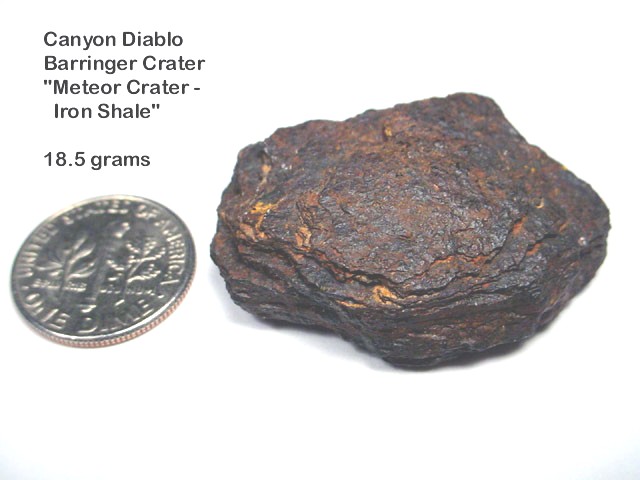
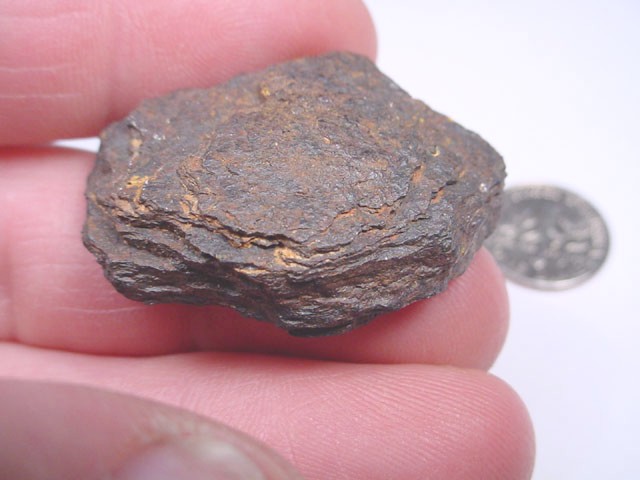
Another fragment. This specimen has been cut and polished. Unlike the previous specimen it doesn't have thin laminations, but it does have a blocky cleavage. And it has voids where nearly all of the original sulfide minerals have vacated. A few silvery grains of relict sulfide minerals (i.e., troilite, or it could be schreibersite a Fe-Ni phosphide) can be seen and are usually associated with these voids.
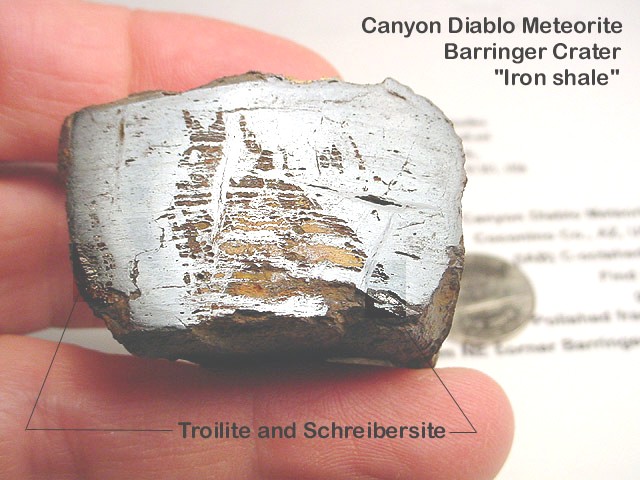
Here is an image of the exterior of the same specimen as above. The brown mineral is goethite, the off-white crust is caliche, and the green encrustation is zaratite, a hydrous nickel carbonate.

The specimen below is also exhibiting a blocky cleavage, but it clearly has no laminar structures.
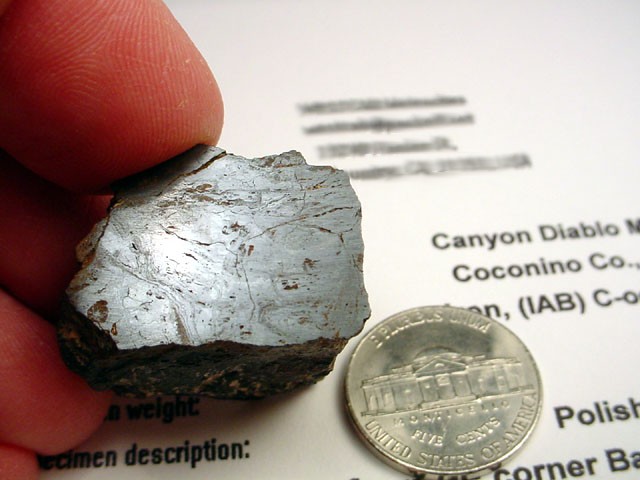
Image description -
The following specimens were found in the Odessa Crater area of Odessa, Texas.
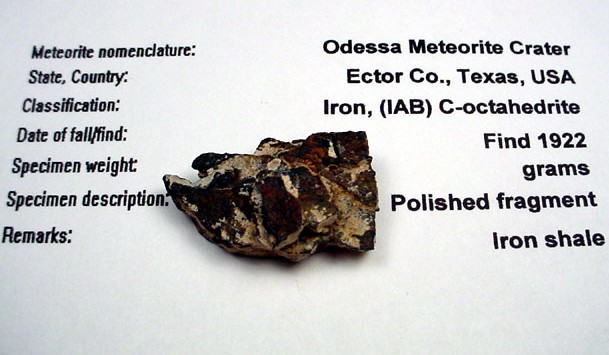

Here is another typical specimen.

And here is another specimen, but without a coating of clay.
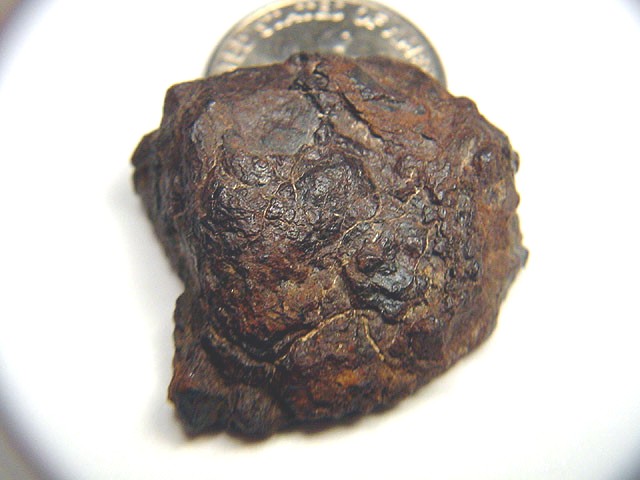
And here is the opposite side of the same specimen in the above image. It has been ground and polished to reveal a tiny metal grain.
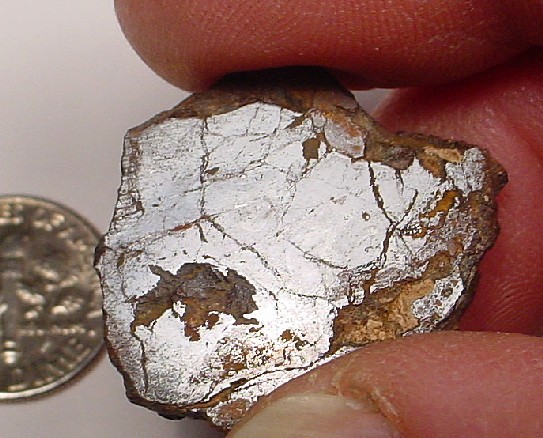
And again in these other specimens, more tiny metal grains.
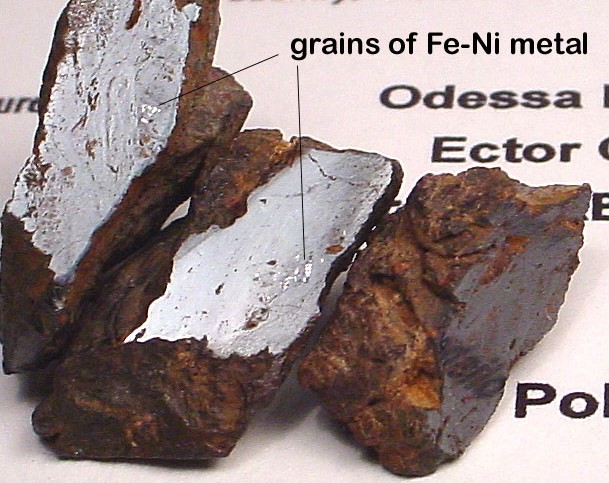
Image description -
The anonymous finder of the specimen in the image below, admits that it came from the Meteor Crater area of Arizona. He personally knows that "several others were found in the same area"!
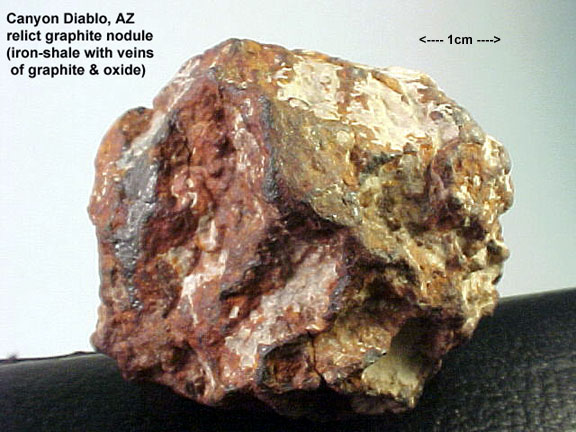
In the image below, is the same specimen, but after it has been cut.
[TBS]
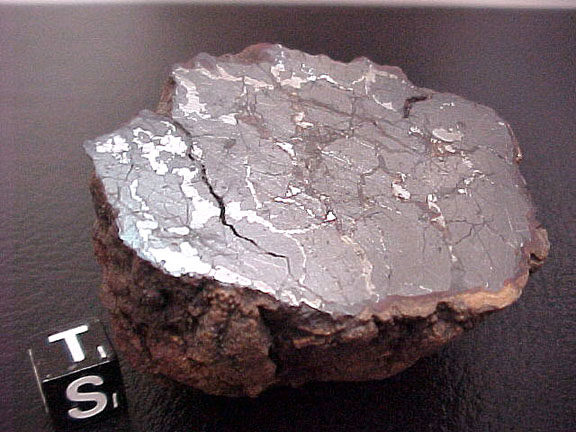
If found, please report your findings to:
American Meteorite Survey
IGGP-UCLA
Department of Chemistry & Biochemistry
UCLA
Box 951569 (post)
607 Charles E. Young Drive East (courier)
Los Angeles, CA 90095-1569
Phone:
(310)
825-1986
Fax:
(310)
206-4038
Email:
wasson@igpp.ucla.edu
Professor Wasson's web page in the Department of Earth and Space Sciences.
The topic of my next few articles will continue a series on California and Nevada Meteorites.
My previous articles can be found *HERE*
For for more information, please contact me by email:
Bolide*chaser
